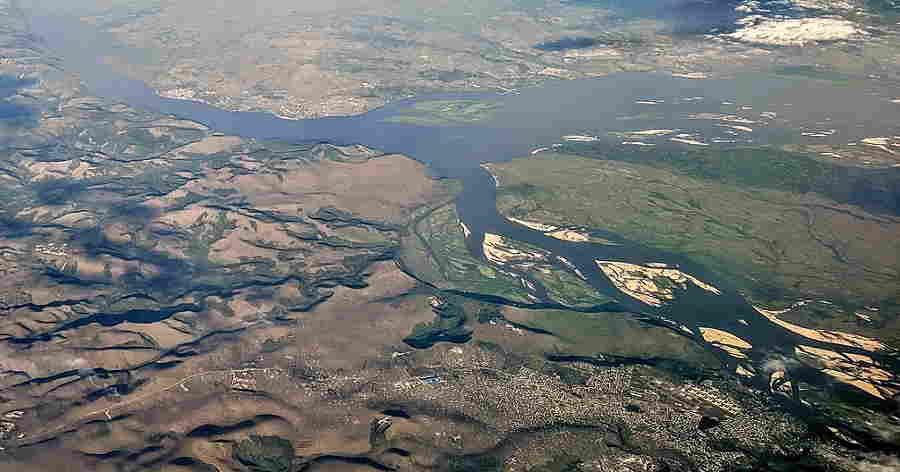
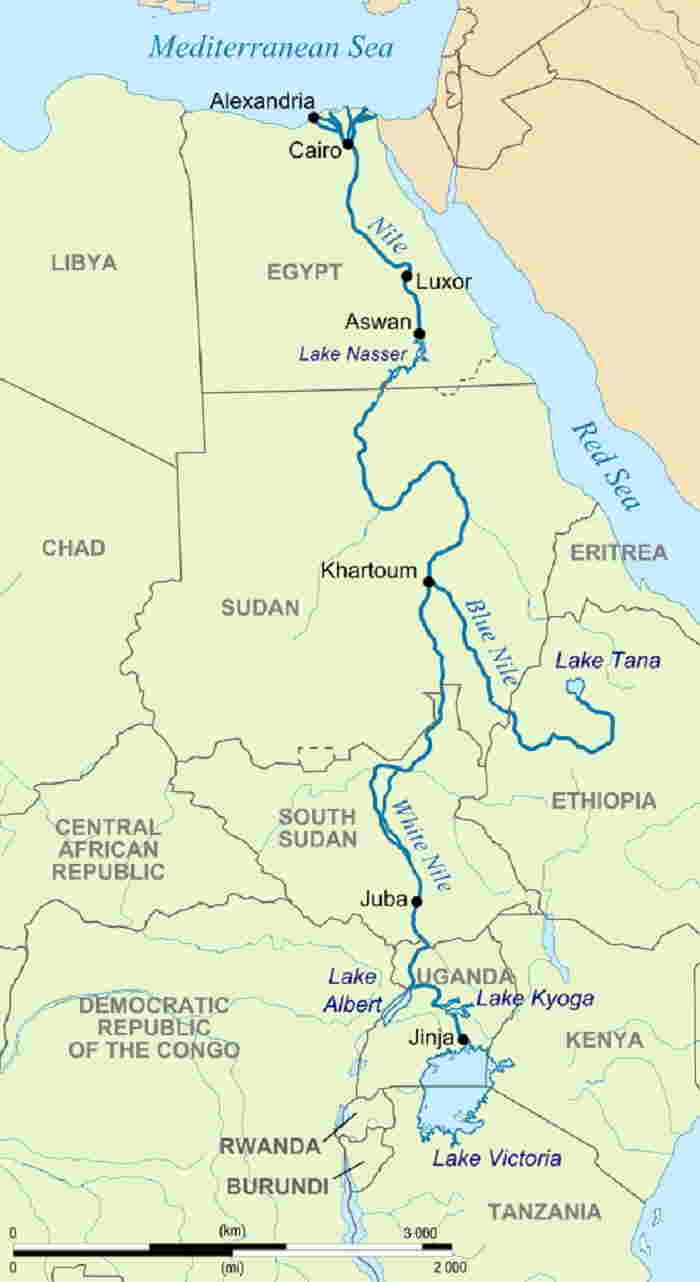
The Nile is a majestic river that has been an important part of human history for thousands of years. It is the longest river in the world, stretching over 6650 km (4130 miles) from its source in the Great Lakes region of East Africa to its delta in the Mediterranean Sea. The Nile begins in the central highlands of Ethiopia, where Lake Tana is the source of the Blue Nile. The White Nile, the other major tributary, originates from Lake Victoria. The two tributaries meet in Khartoum, Sudan, where they form the Nile proper. From Khartoum the Nile flows northward, passing through Egypt and the Sudd wetlands in South Sudan. It then continues northeastwards through Egypt, where it is joined by the Atbara river before reaching the Mediterranean Sea. The Nile is an essential lifeline for the people living along its banks. For centuries, it has been used as a major transportation route for goods and people. The waters of the river have also been used to irrigate crops and to provide drinking water for communities. The Nile is also an important source of electricity, as the Aswan Dam harnesses the power of the river to create hydroelectric power.

The Amazon River is the largest river in the world by volume and is often referred to as the “River of Life”. It is located in South America and runs through Brazil, Peru, Ecuador, Colombia, and Bolivia. The Amazon River is approximately 6,400 km (4,000 mi) long, making it the second longest river in the world after the Nile. It is also the widest river in the world, with a width at its widest point of up to 10 km (6.2 mi). The Amazon River originates in the Peruvian Andes Mountains near the city of Arequipa and flows eastward, eventually emptying into the Atlantic Ocean. Along its entire length, it is fed by numerous tributaries, including the Ucayali, Napo, Madeira, and Tapajos rivers. The Amazon River is unique in that it contains the largest amount of water discharge of any river in the world—approximately 7 million cubic feet per second. The Amazon River is home to the world’s largest rainforest, and its basin is estimated to contain between 10 and 15 percent of the world’s species of plants and animals. The Amazon River is a vital part of the environment and an important part of the world’s ecosystem. It is estimated that the Amazon River provides 20 percent of the world’s fresh water and supports over 30 million people who live in its basin. It is also home to a variety of unique plant and animal species, and it plays an important role in the global climate.
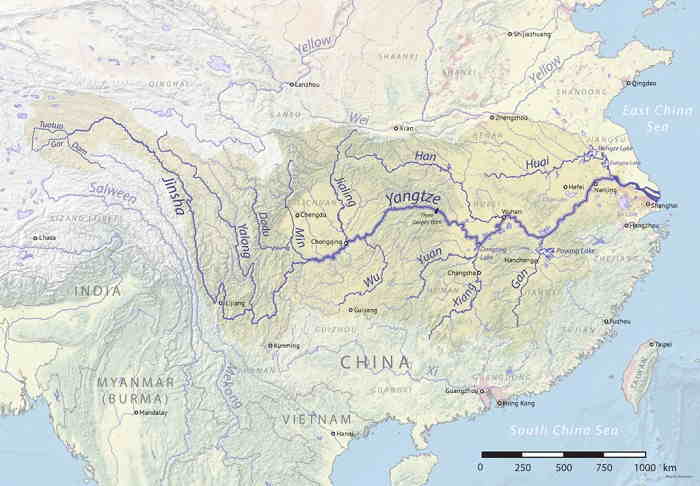
The Yangtze is the longest river in China and the third-longest river in the world. It has a length of 6,300 km (3,900 miles) and runs from its source in the west at the glaciers of the Tibetan Plateau to its mouth in the east at the East China Sea. The Yangtze has a drainage area of 1,800,000 km2 (690,000 square miles), which is about one-third of the total area of China. The Yangtze is the largest river in China and is a critical source of water for millions of people along its banks. It is also an important transport artery for the country, connecting major cities in the east and the west. The Yangtze begins in the glaciers of the Tibetan Plateau, then flows eastward through a number of major Chinese cities, including Shanghai, Nanjing, and Wuhan. It then turns southward and flows through the Three Gorges region of the Hubei Province before it empties into the East China Sea at the city of Shanghai.
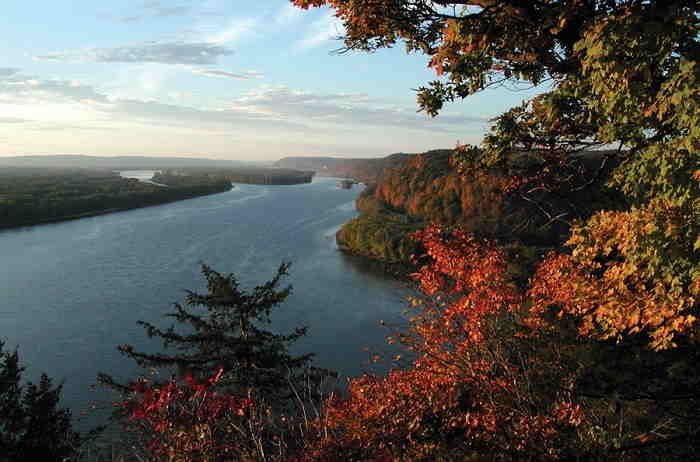
The Mississippi-Missouri-Red Rock river system is the fourth-largest river system in the world, stretching a total of 5971 km (3,710 miles). It is composed of the Mississippi River, the Missouri River, and the Red Rock River. The Mississippi River, the longest of the three, begins in Lake Itasca in Minnesota and ultimately empties into the Gulf of Mexico in Louisiana. With a total length of 3766 km (2340 miles), the Mississippi is the second-longest river in the United States and is sometimes referred to as the “Father of Waters.” The Missouri River is the longest tributary of the Mississippi River. It begins in the Rocky Mountains of Montana and flows 3767 km (2341 miles) before joining the Mississippi at St. Louis, Missouri. It is the longest river in North America and is sometimes referred to as the “Big Muddy” due to its frequent flooding. The Red Rock River is the shortest of the three, stretching only 110 km (70 miles). It is a tributary of the Missouri River, beginning in Yellowstone National Park in Wyoming and flowing through Montana before joining the Missouri near Great Falls, Montana. The Mississippi-Missouri-Red Rock river system is a major part of the United States’ infrastructure, providing transportation and water for millions of people across the country.
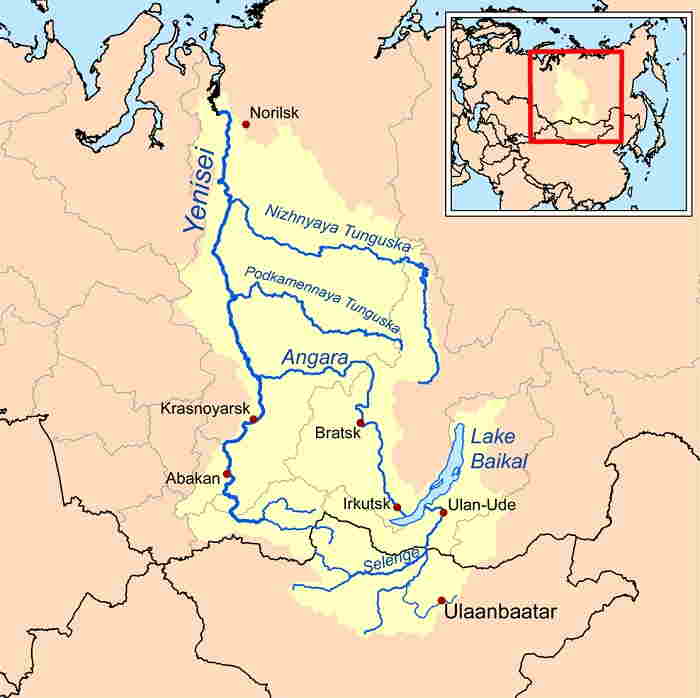
The Yenisei River is one of the longest rivers in the world, stretching 5539 km (3445 miles) across Siberia in Russia. It is the fifth-longest river in the world and the largest river system flowing to the Arctic Ocean. The river begins in the Mongolian Plateau and flows north, emptying into the Kara Sea near the Russian port of Dudinka. The Yenisei is the largest river in Russia and the second-longest river in Asia, after the Yangtze. It is fed by numerous tributaries that help form a vast basin. The river runs through two major mountain ranges, the Putorana Mountains and the Sayan Mountains. It then continues into the Central Siberian Plateau, where it is joined by its largest tributary, the Angara River.
---5464-km_551.jpg)
The Huang He (Yellow River) is the second longest river in China and the sixth longest river in the world. It flows from west to east across the northern part of the country, stretching for 5464 km (3395 miles). It begins in the mountains of western China, near the borders with Russia and Mongolia, and empties into the Bohai Sea. Along its course, the Huang He passes through nine different provinces, including Qinghai, Gansu, Ningxia, Inner Mongolia, Shanxi, Shaanxi, Henan, Shandong, and Hebei. In addition, the river also flows through several major cities, including Lanzhou, Yinchuan, Zhengzhou, Kaifeng, and Jinan. The Huang He is known for its yellowish-brown color, which is caused by the high concentration of sediment and other minerals it carries. This sediment is often referred to as “China’s sorrow”, as it is responsible for several floods and droughts throughout the centuries.
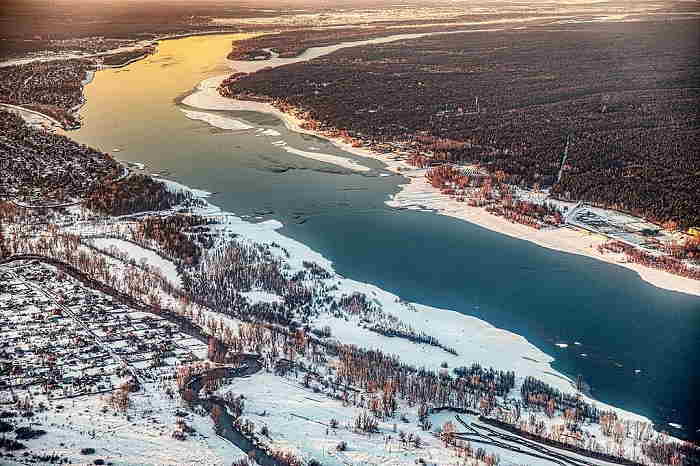
The Ob River is the world's seventh longest river. It stretches for a total of 5410 km (3360 miles) from its source in the Altai Mountains to its outlet in the Kara Sea. The Ob River has its source in the south-western part of the Altai Mountains. It then flows for 2,500 miles (4,023 kilometers) through western Siberia, eventually meeting up with its main tributary, the Irtysh River. The combined length of the Ob and Irtysh Rivers is 3,650 miles (5,875 kilometers). From here, the Ob River continues on its way through the lowlands of western Siberia and eventually empties into the Kara Sea. The Ob River has a very large drainage basin that covers an area of 1.11 million square miles (2.88 million square kilometers).
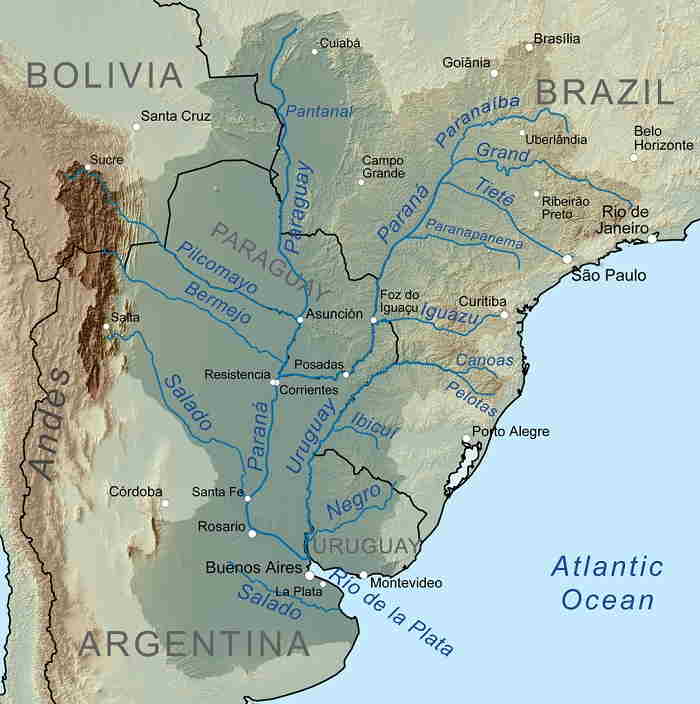
The Paraná River is the second longest river in South America, stretching for a total of 4,880 kilometers (3,030 miles) from its source in the south of Brazil to its mouth at the Rio de la Plata in Argentina. It serves as a natural border between Argentina and Paraguay. The source of the Paraná River is the Paranaíba River in Brazil, which flows into the Grande River, and then the Paraná River flows from the Grande River to Paraguay, where it is joined by the Paraguay River. From there, the Paraná River continues on through Argentina, eventually reaching its final destination at the Rio de la Plata. Along its journey, the Paraná River is fed by a number of other tributaries, including the Paraguay, Iguazu, and Uruguay rivers. The Paraná River is a major part of the La Plata Basin, which is the world’s fourth largest river basin.
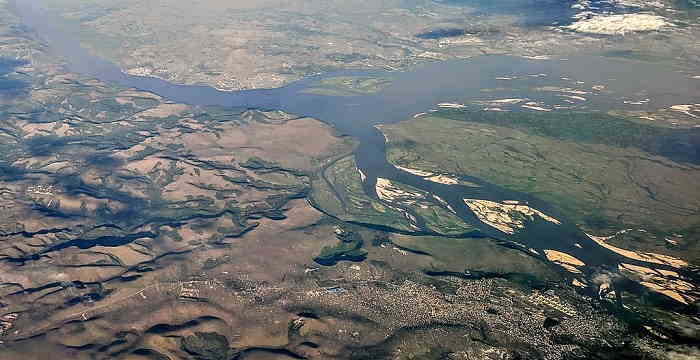
The Congo River has a length of approximately 4,700 kilometers (2920 miles). It ranks as the second-longest river in Africa and the ninth-longest in the world. Its origins can be traced to the highlands and plateaus of East Africa, where a network of smaller streams and rivulets merge to form the mighty Lualaba River. This waterway then journeys westward, carving through dense rainforests, mountainous terrains, and vast floodplains, ultimately culminating in the Atlantic Ocean.

The Amur River, an emblem of Eastern Eurasia, is the world's tenth longest river, forming the border between the Russian Far East and Manchuria/Northeastern China. The total length of Amur river including its source river Argun is 4444 km (2761 miles).